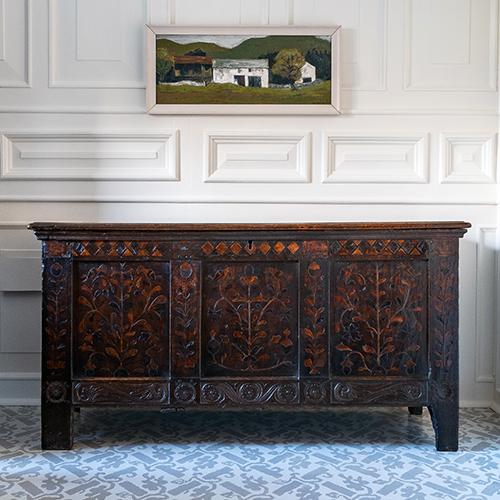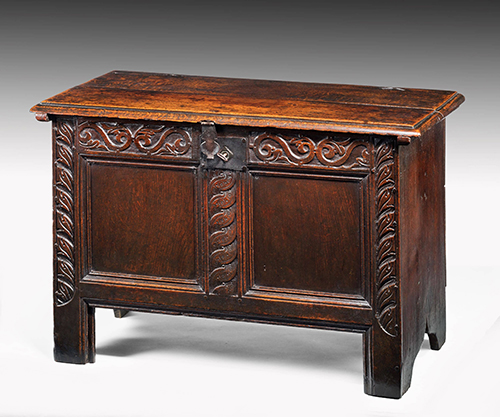

The term coffer dates to medieval times and is used to describe a lockable wooden chest constructed for the purpose of storing valuable items such as gold or silver. First used in the 13th century, the term is a derivation of the Latin word ‘cophinus’, meaning a large basket or storage hamper. In Middle English the word is written as ‘coffre’ or ‘cofre’ and is absorbed from the French language following the Norman Conquest.
The first recorded use of chests is by the ancient Egyptians circa 3000 BC, who used wood or woven reeds to create boxes for storing food, fine cloth, or weapons. The traditional medieval English coffer is usually constructed from native oak, harnessing the woods strength and durability.
Traditionally rectangular in form, and standing on four feet, coffers usually have a detachable or hinged top which can be locked for secure storage. The earliest examples are often relatively plain, however as the coffer became a more functional household item, finely carved motifs and rich decoration were increasingly common from the Elizabethan era onwards.
 Once an essential storage device in medieval halls and manors, the coffer became a more practical household feature from the 16th century. While still used for storage, coffers would often double up as side tables, or even low benches thanks to the rigidity of their construction.
Once an essential storage device in medieval halls and manors, the coffer became a more practical household feature from the 16th century. While still used for storage, coffers would often double up as side tables, or even low benches thanks to the rigidity of their construction.
The use of the coffer as an item for securing household valuables gave rise to the British phrase, “checking the coffers”, meaning to see what funds are available. The phrase is a reference to a time when households or institutions would literally have to consult their coffers to see if there were sufficient finances available for a transaction. Similarly, a rise in taxation is still often referred to as a means of “swelling government coffers”.
Click here to view a selection of Coffers currently available from BADA members.

